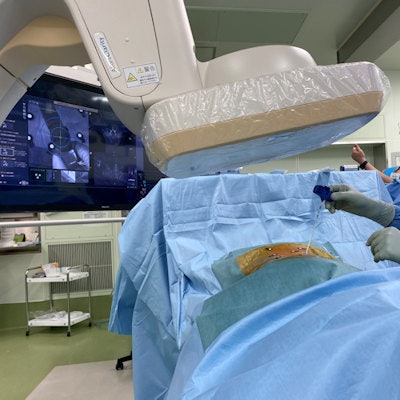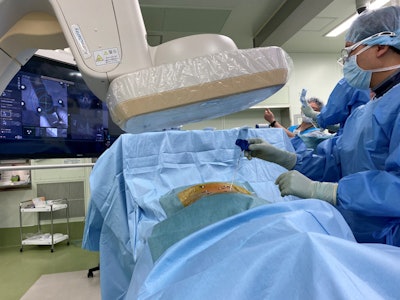
Philips has installed its ClarifEye augmented reality (AR) surgical navigation system at the International University of Health and Welfare's Mita Hospital in Tokyo.
The system, which has been installed on a Phillips interventional x-ray system in a hybrid operating room, has been used to treat its first patients in Japan. With the help of ClarifEye, orthopedic surgeon Dr. Ken Ishii performed minimally invasive image-guided procedures to successfully treat patients presenting with spinal stenosis and scoliosis, according to Philips.
 Philips' ClarifEye augmented reality surgical navigation system. Images courtesy of Philips.
Philips' ClarifEye augmented reality surgical navigation system. Images courtesy of Philips.ClarifEye combines 2D and 3D visualizations acquired at low x-ray dose levels with 3D AR, enabling surgeons to define and navigate trajectories for device placement and avoid damage to neurological and vascular structures close to the spine, Philips said. Using noninvasive markers applied to the patient's skin, ClarifEye's live video computer vision and AR technology track patient positioning.
The live video is then overlaid onto a 3D cone-beam CT scan of the patient's spinal column, according to Philips. Surgeons can then view -- without live x-ray imaging -- the inside and outside of the patient on the same image, along with the planned and real-time trajectory of a ClarifEye needle, according to the vendor. It also obviates the need for reference frames, Philips said.
In related news, Philips is also highlighting new research data involving the use of ClarifEye. A study published in September in the European Spine Journal showed that the system produced 98% accuracy for pedicle screw placement, comparable to the performance reported in the literature for other navigation and robotic systems, according to Philips (Eur Spine J, September 23, 2022).



















